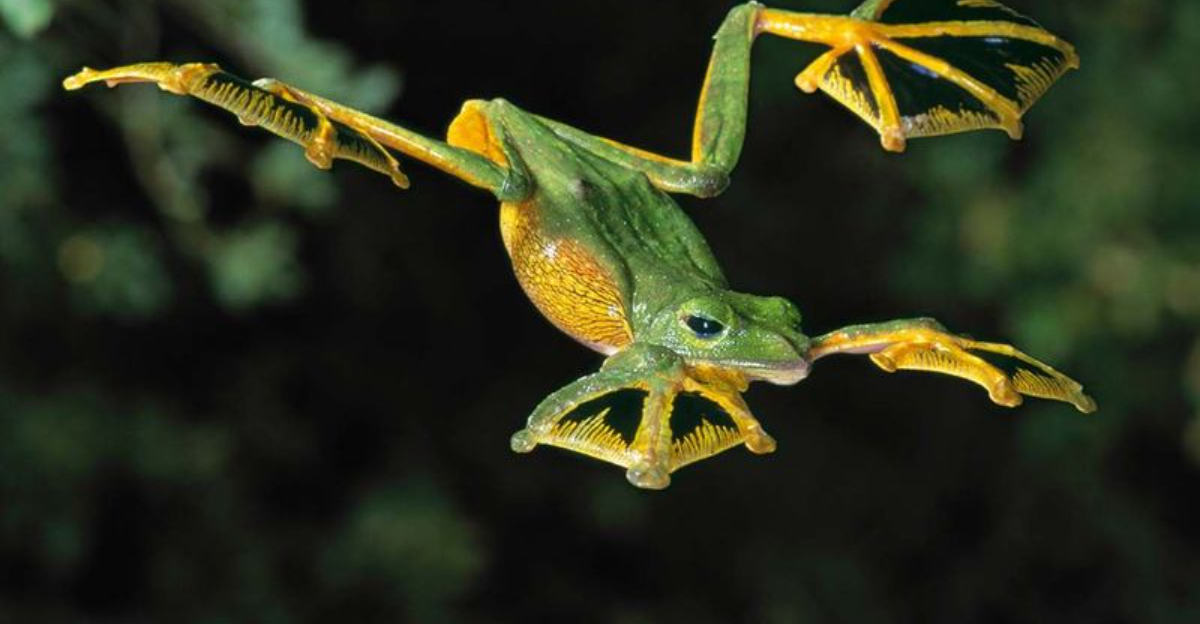When you think of flying animals, birds and bats are probably the first creatures that come to mind. However, the animal kingdom is full of surprises, and there are numerous unexpected flyers that defy the laws of gravity in fascinating ways.
From fish that take to the air to amphibians that glide through the trees, these extraordinary animals showcase the diversity and innovation of nature. So, let’s explore these unique creatures and discover how they soar above their natural habitats.
1. Flying Fish
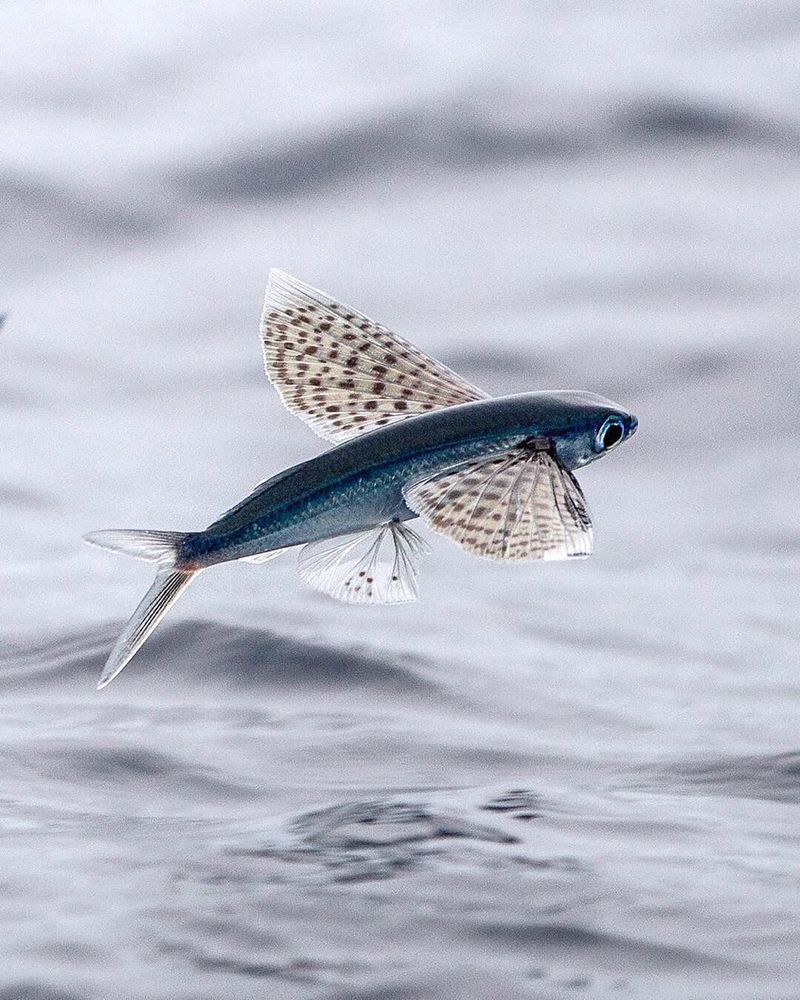
Flying fish are renowned for their impressive ability to leap out of the water and glide through the air. Found in warm ocean waters, these remarkable fish use their specially adapted fins to escape predators.
With a running start beneath the waves, they propel themselves into the air, using their elongated pectoral fins like wings to glide for distances over 500 feet.
This incredible display not only helps them evade danger but also showcases their unique survival strategy.
During their flight, flying fish can reach speeds of up to 37 miles per hour, making them one of the fastest animals in the ocean. Their streamlined bodies minimize air resistance, while their forked tails provide the necessary thrust to leap clear of the water.
It’s a breathtaking sight to see these silvery creatures skimming the surface, sometimes in groups, creating a mesmerizing spectacle of nature.
Flying fish primarily inhabit tropical and subtropical seas, where they are a common sight to sailors and ocean-goers.
Their flights are often mistaken for bird activity, adding to their mysterious allure. This capability has evolved as a defense mechanism, allowing them to swiftly escape the clutches of underwater predators.
2. Colugo
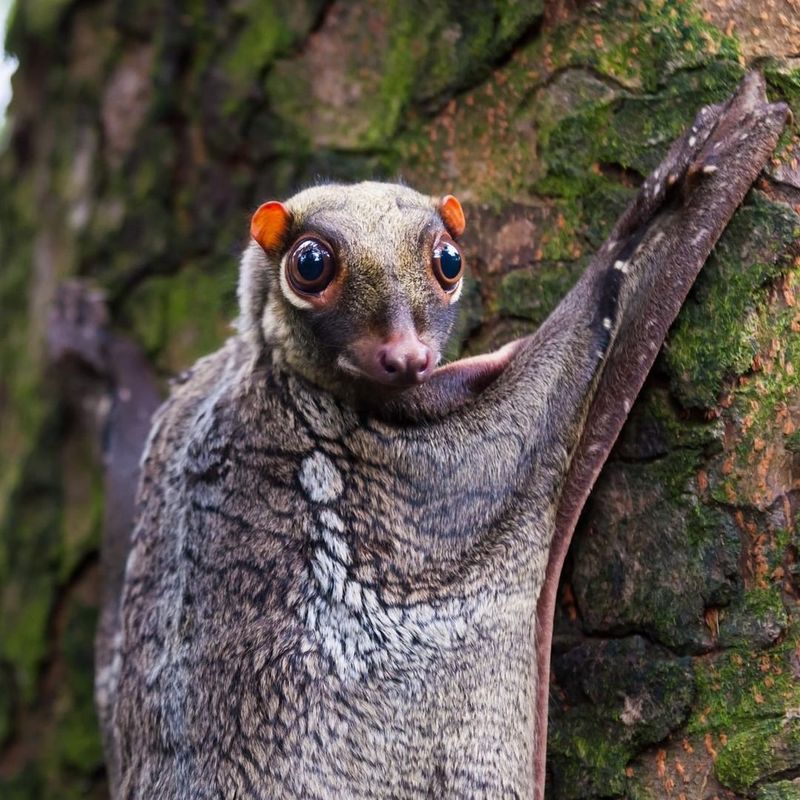
The colugo, often referred to as the “flying lemur,” is neither a lemur nor does it truly fly. Instead, it boasts a remarkable ability to glide between trees, making it one of the most skilled mammalian gliders.
Found in Southeast Asian rainforests, colugos possess a large patagium—a membrane of skin that stretches from their neck to the tips of their fingers, toes, and even their tail.
This expansive skin flap allows them to glide distances of over 200 feet, effortlessly moving through dense foliage.
Colugos are nocturnal creatures, relying on their ability to glide to navigate the forest under the cover of night. Their large, forward-facing eyes enhance their night vision, making them adept at spotting predators and finding food in the dark.
They primarily feed on tender leaves, shoots, and fruit, playing an essential role in their ecosystem as seed dispersed.
Despite their name, flying lemurs are more closely related to primates. The colugo’s unique adaptation has fascinated scientists studying the evolution of gliding and flying in mammals.
3. Flying Squirrel
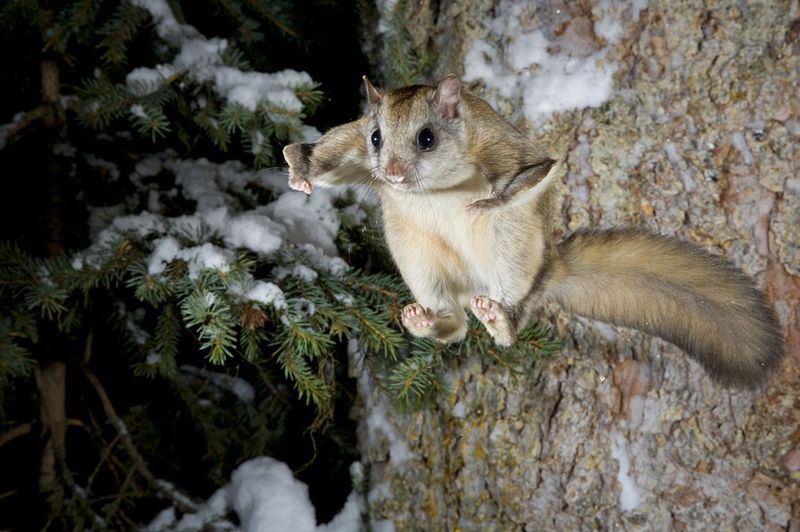
True masters of the forest canopy, flying squirrels, with their ability to glide making them one of the most agile and graceful mammals.
These small, nocturnal rodents are found in woodlands across North America, Europe, and Asia. They are equipped with a patagium, a furry membrane that extends from their wrists to their ankles, allowing them to glide distances of up to 300 feet.
Their gliding ability is not just for show; it’s a crucial survival skill. By gliding from tree to tree, flying squirrels can avoid ground-based predators, access food sources, and find mates. Their large, round eyes enhance their vision in low-light conditions, making them excellent night-time navigators.
This unique adaptation has earned them a special place in forest ecosystems, where they help control insect populations and disperse seeds.
Aside from their remarkable gliding skills, flying squirrels are known for their social behavior. They often live in communal nests, sharing warmth and protection with their companions.
This social structure can be quite complex, with individuals forming strong bonds and cooperating to raise their young. Their acrobatic feats and charming personalities make flying squirrels a beloved subject of wildlife observation.
4. Draco Lizard
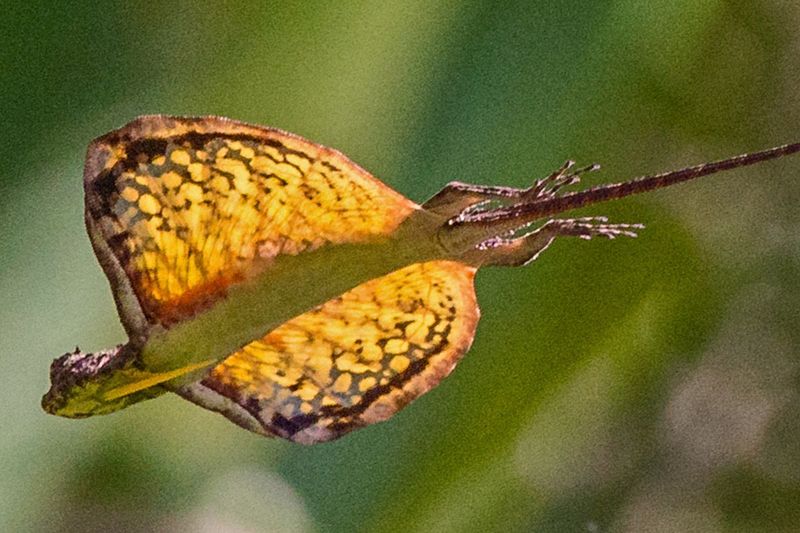
The Draco lizard, aptly nicknamed the “flying dragon,” is a small but spectacular reptile native to the forests of Southeast Asia.
This lizard doesn’t truly fly but glides with impressive skill, using elongated ribs covered by a fold of skin to form ‘wings.’ When it’s time to move, the Draco lizard extends these ribs, unfurling its colorful patagium like a parachute.
Draco lizards are masters of camouflage, often blending seamlessly with the bark and leaves of their surroundings. This ability, coupled with their gliding prowess, allows them to evade predators with ease.
They typically glide distances of up to 30 feet, maneuvering adeptly through the forest to find food and mates. Their diet consists mainly of ants and termites, which they capture with quick, darting movements.
These lizards are a wonder to watch as they leap between trees, their brightly colored wings flashing in the sunlight. T
heir gliding serves not only as a mode of travel but also as a display during courtship rituals. Male Draco lizards perform elaborate displays to attract females, showcasing their vibrant colors and elegant glides to win over potential mates.
5. Flying Snake
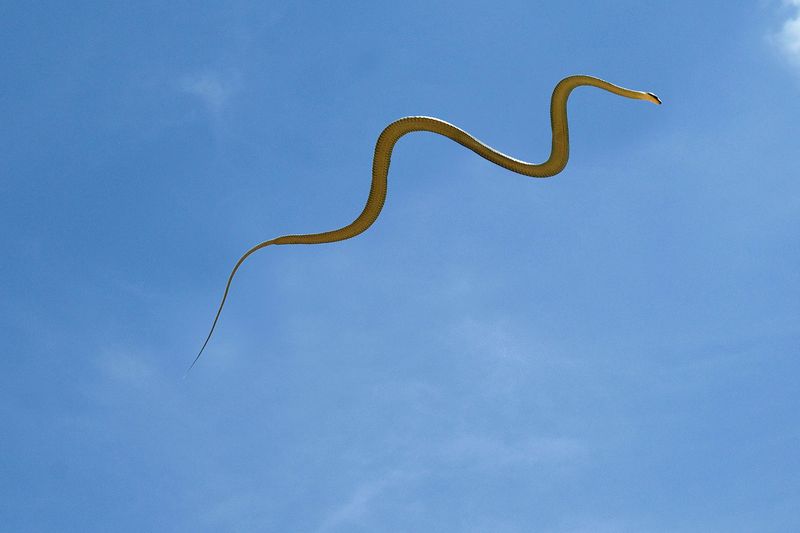
Flying snakes are an extraordinary example of nature’s ingenuity, gliding through the air in a way that seems to defy the ordinary capabilities of reptiles. Found primarily in the jungles of Southeast Asia, these snakes are capable gliders, using their entire bodies to maneuver through the canopy.
When ready to glide, a flying snake launches itself from a tree, flattening its body to increase air resistance. Their unique ability to glide is both a defensive mechanism and a means of navigating their arboreal habitat.
By flattening their ribs and body, they create a concave wing-like surface, allowing them to undulate through the air. This gliding technique helps them escape predators and reach prey more efficiently.
Unlike other gliders that just fall with style, flying snakes are active controllers of their flight path, capable of making midair turns. Watching a flying snake in motion is a breathtaking experience.
These reptiles effortlessly twist and turn, showcasing an elegant dance through the sky. Despite their fearsome appearance, flying snakes are not dangerous to humans. They feed primarily on lizards, birds, and rodents, playing an essential role in maintaining the balance of their ecosystem.
6. Sifaka
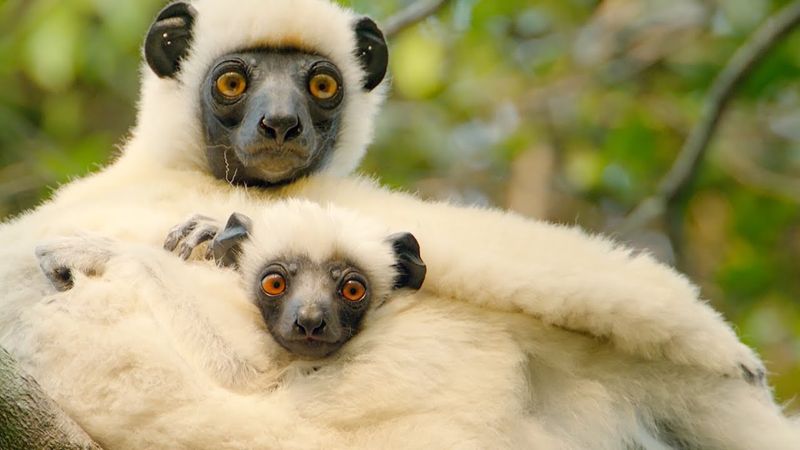
The sifaka, a type of lemur native to Madagascar, is known for its unusual method of locomotion. While they don’t truly fly, sifakas are experts at leaping through the air, using their powerful hind legs to propel themselves between trees.
These lemurs can cover impressive distances in a single bound, thanks to their long, strong limbs and agile bodies. Sifakas have a distinctive way of moving on the ground, where they perform a sideways skipping motion, reminiscent of a dance.
This unique adaptation allows them to navigate the forest floor efficiently when necessary. In the trees, they rely on their incredible jumping ability to travel and forage, making them one of the most dynamic movers in the animal kingdom.
Their leaping prowess is not just for mobility; it also plays a role in their social interactions. Sifakas live in matriarchal groups, where females are in charge.
These groups communicate and bond through vocalizations and physical contact, often using their leaping skills to engage in playful activities. Sifakas feed primarily on leaves, fruits, and flowers, making them important seed dispersers in their habitat.
7. Flying Ant
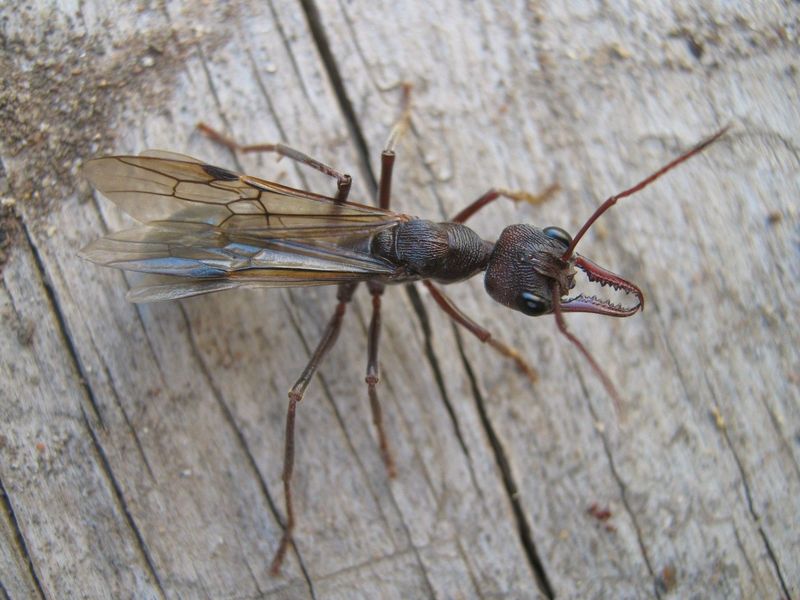
Gliding ants are a fascinating example of small creatures mastering the art of aerial navigation. Found in the tropical rainforests of Central and South America, these ants have developed an ingenious way to glide back to their home tree if they fall from the canopy.
Unlike other ants, gliding ants have specialized flattened bodies and elongated legs that aid them in steering through the air. When dislodged from their high perches, gliding ants twist their bodies to control their descent, aiming to land on the trunk of their home tree.
This behavior reduces their risk of being lost on the forest floor, where predators and the challenges of finding their way back could be fatal. Their gliding ability is a remarkable adaptation that enhances their survival in a complex and competitive ecosystem.
These ants are part of a unique evolutionary niche, showcasing how even the smallest creatures have developed sophisticated means of travel.
Observing a gliding ant in action reveals the intricate interplay between form and function, where every part of their body is perfectly adapted to their arboreal lifestyle. Their existence highlights the incredible diversity of life in rainforest canopies.
8. Kite Spider
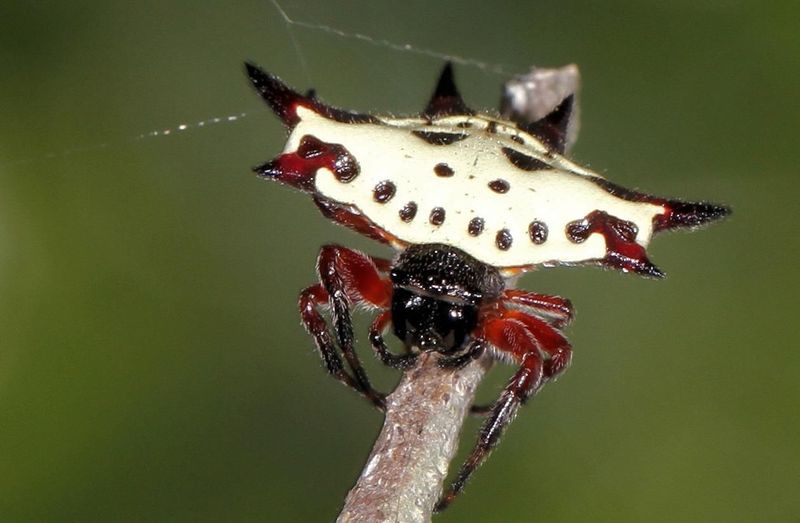
Kite spiders, while not truly flying, have mastered the art of air travel using their silk. Found in various parts of the world, these spiders use their silk strands as a form of ballooning, allowing them to travel significant distances through the air.
This method of locomotion is especially common in young spiders or spiderlings, which use it to disperse to new areas. The process begins with the spider climbing to a high point and releasing silk threads into the wind.
As the silk catches air currents, it lifts the spider into the sky, allowing it to be carried over long distances. This fascinating form of travel helps kite spiders find new habitats, escape predators, and explore environments beyond their usual reach.
Kite spiders are a testament to the innovative solutions nature can devise for the challenges of survival and dispersal. Their ability to harness the wind demonstrates a unique use of available resources, showcasing the adaptability and resourcefulness inherent in the natural world.
This silk-based gliding serves as a critical component of their life cycle, ensuring genetic diversity and population spread.
9. Wallace’s Flying Frog
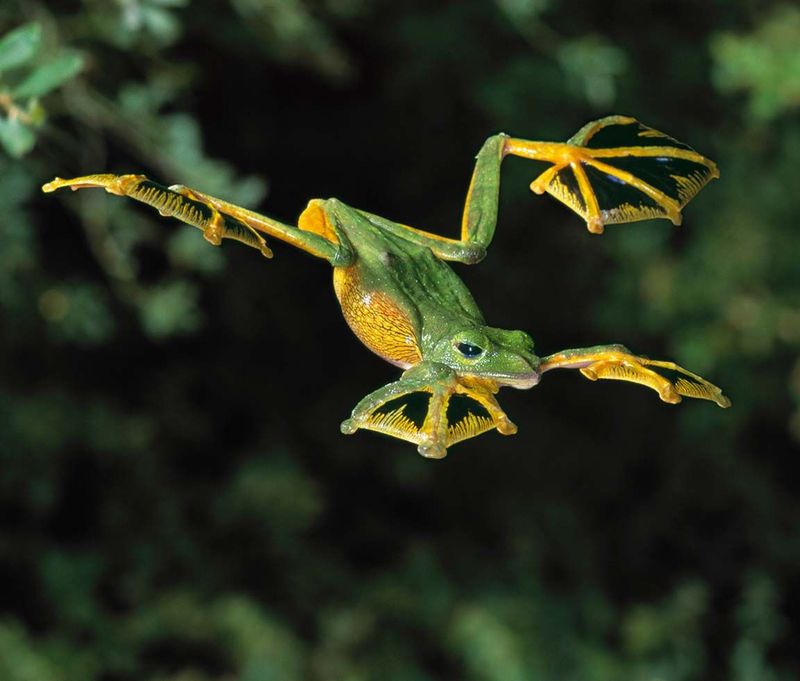
Wallace’s flying frog is an extraordinary amphibian capable of gliding from tree to tree in the dense jungles of Southeast Asia. Named after the famed naturalist Alfred Russel Wallace, this frog has developed extensive webbing between its toes, enabling it to glide up to 50 feet.
Its vibrant green color allows it to blend seamlessly with the leaves, providing excellent camouflage against predators. These frogs spend much of their life in the trees, rarely descending to the forest floor. When they do, it’s usually to breed in temporary pools of water.
The webbing on their feet not only aids in gliding but also helps them swim efficiently. This adaptation is crucial for evading predators and moving quickly through their arboreal habitat.
Observing these frogs can be a delightful experience, as their bright colors and dynamic movements add to the vibrant tapestry of life in the rainforest.
10. Flying Geckos
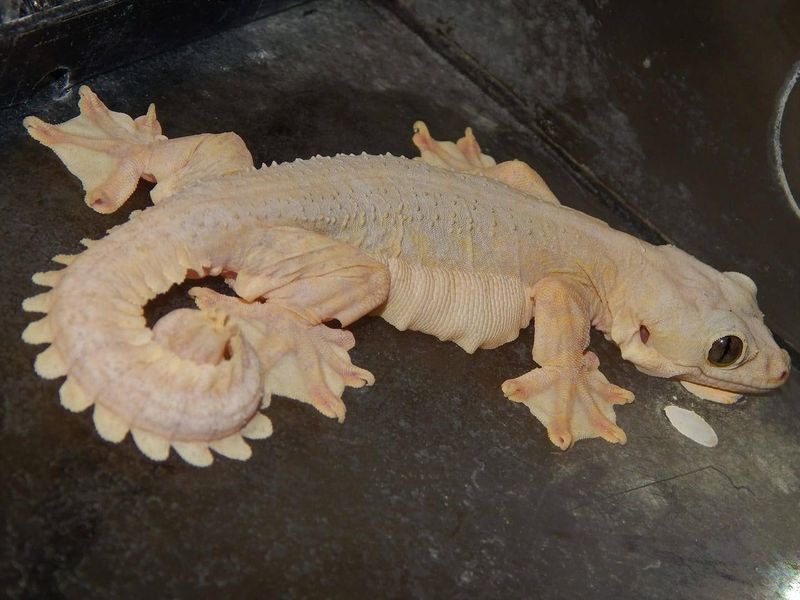
Flying geckos are remarkable reptiles known for their ability to glide between trees in their Southeast Asian habitats. These geckos have developed specialized flaps of skin along their sides, toes, and tail, which they use to create lift and control during their glides.
This adaptation allows them to move efficiently through the dense forest canopy, escaping predators and searching for food. Their gliding skills are complemented by their excellent camouflage abilities.
Flying geckos can blend in seamlessly with their surroundings, mimicking the appearance of tree bark and leaves. This cryptic coloration provides them with protection against predators, making them difficult to spot even when they are stationary.
In addition to their gliding and camouflage, flying geckos are known for their unique vocalizations, which they use to communicate with each other.
These calls can often be heard echoing through the forest, adding an auditory element to their already fascinating behavior. Flying geckos exemplify the incredible adaptability and resourcefulness of reptiles, showcasing nature’s endless capacity for innovation.
11. Sugar Glider
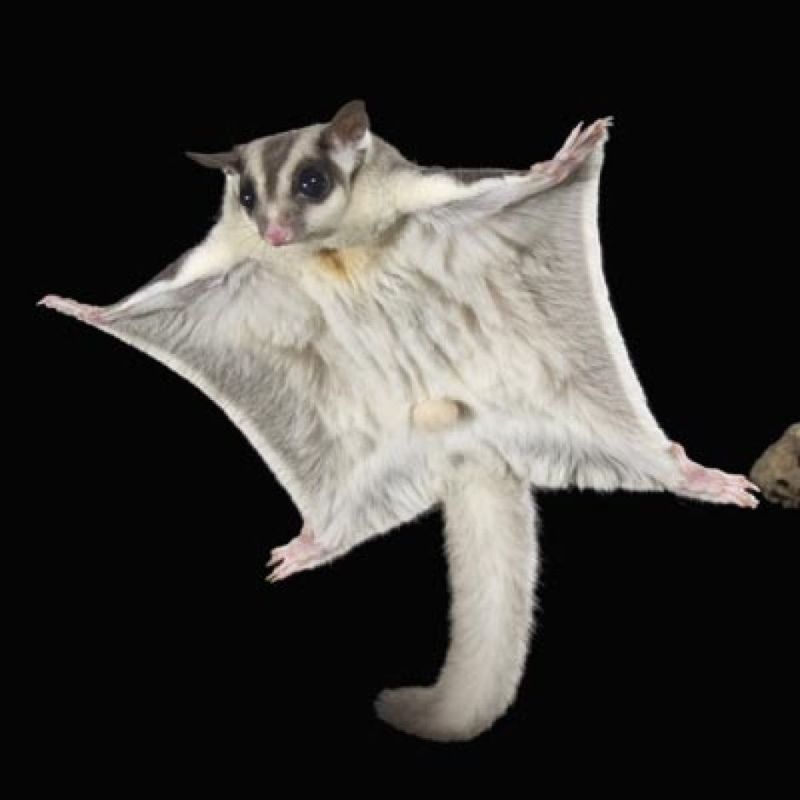
Sugar gliders are small marsupials native to Australia, known for their graceful gliding abilities. These nocturnal creatures have a thin membrane called a patagium, stretching from their forelegs to their hindlegs, allowing them to glide distances of over 150 feet.
This capability is not just for locomotion but also for finding food and avoiding predators. Sugar gliders are highly social animals, often found living in groups that share nests and care for each other’s young.
Their social structure is complex, with individuals forming strong bonds and engaging in communal activities. This social lifestyle aids in their survival, as they can warn each other of dangers and share resources.
These marsupials feed on a varied diet, including nectar, fruits, insects, and small vertebrates. Their gliding ability allows them to access food sources that might otherwise be out of reach.
Observing sugar gliders in the wild is a fascinating experience, as their agile movements and playful interactions highlight the vibrant life of Australia’s forests.
12. Flying Fox
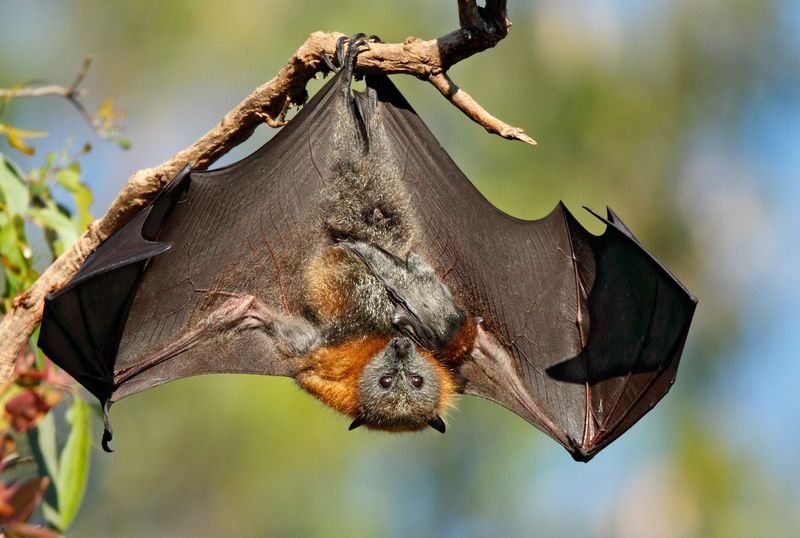
Flying foxes, often known as fruit bats, are among the largest bats in the world, with wingspans reaching up to 5 feet. Contrary to their name, they don’t possess fox-like features but are named for their dog-like faces.
These nocturnal mammals are expert fliers, capable of covering vast distances in search of food. Found in tropical regions across Asia, Africa, and Australia, flying foxes play a vital role in their ecosystems as pollinators and seed dispersed.
They feed primarily on fruit, nectar, and flowers, using their keen sense of smell to locate food. Their nightly foraging journeys can cover over 30 miles, showcasing their impressive endurance and navigational skills.
Flying foxes have a unique social structure, often roosting in large colonies known as camps. These gatherings can be quite noisy, with individuals communicating through a variety of vocalizations.
Despite their size, flying foxes are gentle creatures, relying on their intelligence and social bonds to thrive. Their presence is essential for the health of their habitats, making them a keystone species in the ecosystems they inhabit.
13. Paradise Tree Snake
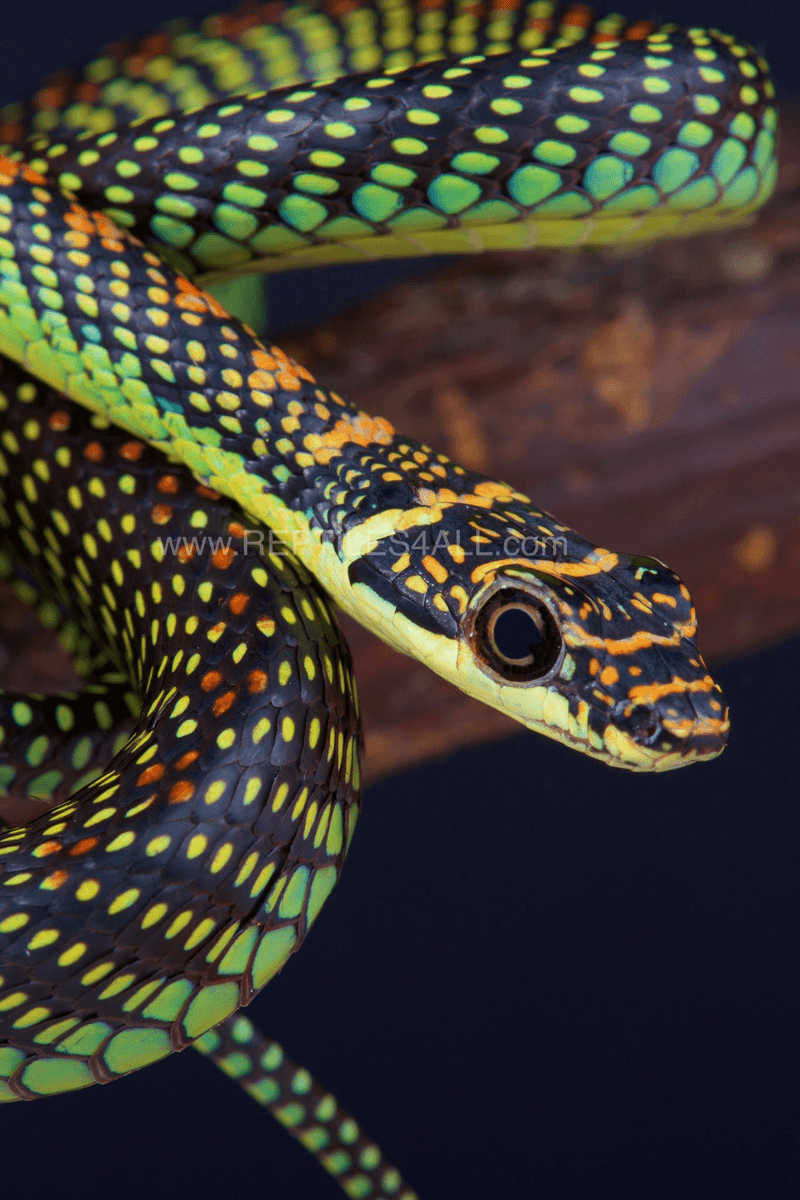
The paradise tree snake, native to Southeast Asia, is a marvel of nature with its unique gliding ability. Like the flying snake, this snake flattens its body to create a wing-like shape, allowing it to glide gracefully through the trees.
Its vibrant green and black coloration provides excellent camouflage among the leaves, aiding its stealthy movements. These snakes utilize their gliding skills to hunt and escape predators, launching themselves from branches with a quick flick of their bodies.
The paradise tree snake’s ability to glide distances of up to 100 feet is a testament to its remarkable adaptation to an arboreal lifestyle. This behavior also aids in their territorial expansion and finding mates.
The sight of a paradise tree snake gliding through the forest is an awe-inspiring spectacle. Their movements are fluid and controlled, making them seem almost weightless as they navigate their aerial pathways.
These snakes are non-venomous and pose no threat to humans, focusing their diet on small lizards and frogs. Their existence highlights the incredible diversity and adaptability of reptilian life.
14. Japanese Flying Squid

Japanese flying squid are remarkable cephalopods that have developed the ability to glide above the water’s surface. Found in the North Pacific Ocean, these squid take to the air to escape predators, using a combination of jet propulsion and wing-like fins.
As they shoot out of the water, they spread their arms and fins to maximize lift, gliding distances of up to 30 meters. The sight of these squid soaring through the air is a mesmerizing phenomenon, often witnessed by fishermen and marine observers.
Their gliding serves as both a means of evasion and an efficient way to travel between different parts of their oceanic environment. This extraordinary adaptation is a testament to the innovative survival strategies employed by marine life.
Japanese flying squid are an important part of the marine food web, serving as prey for larger species such as whales and sharks.
Observing these squid in action offers a glimpse into the fascinating world beneath the waves, where evolution has taken some surprising turns.

